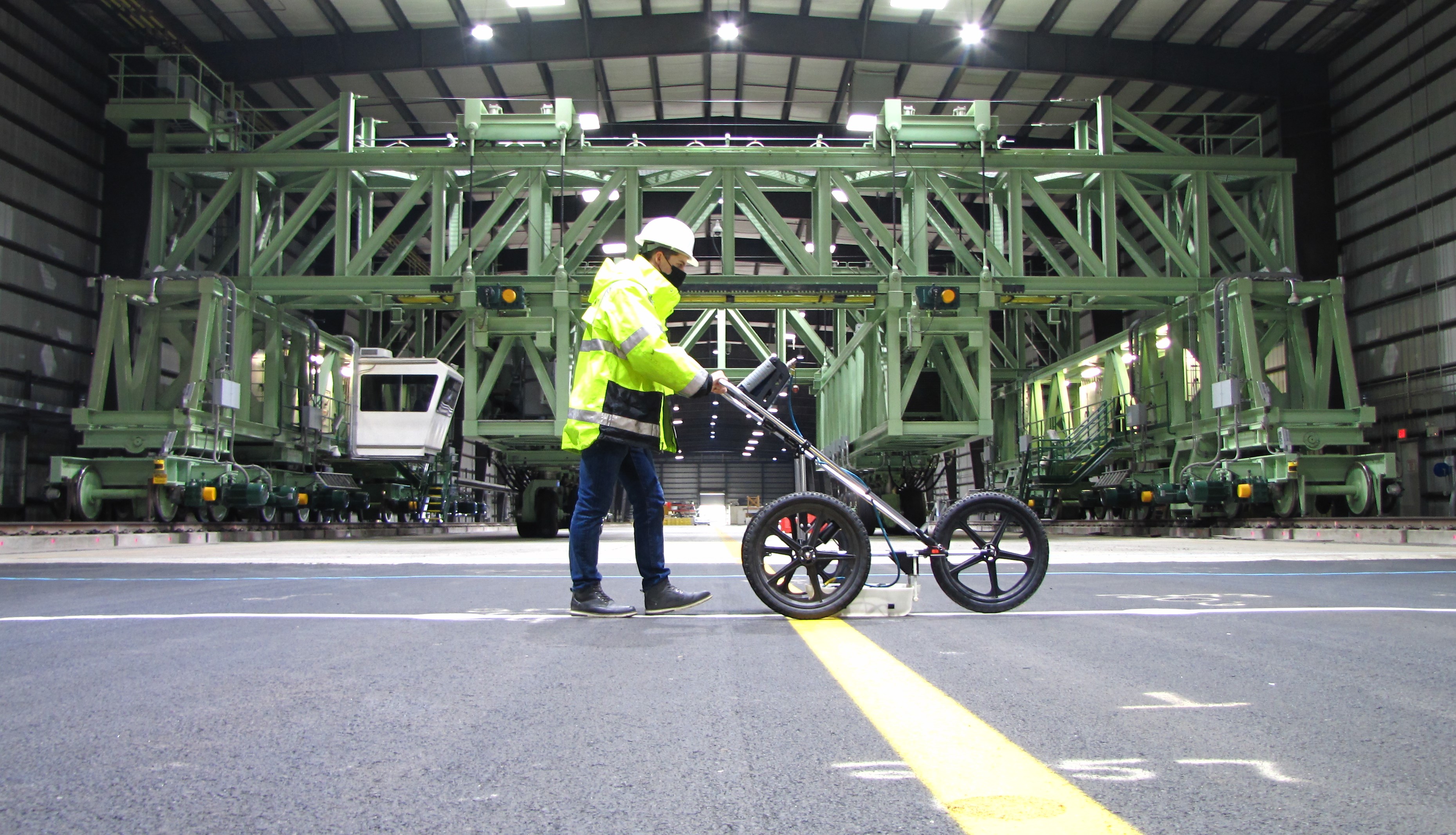
Airport managers require comprehensive and rational evaluations of their pavements for more efficient and effective maintenance and repair decisions. Nondestructive testing (NDT) technologies provide the means to do so.
Traditionally, an airport pavement is assessed through visual inspection of the surface. This can be subjective and supplies little information about its structural condition. To assess the pavement structurally, samples must be taken for the material to be tested on-site and in the laboratory. Sampling the pavement disrupts airport operations, making the pavement unavailable for aircraft operations. Depending on the scope of the investigation, the repairs can be extensive and costly.
NDT technologies assess the functional and structural condition of the pavement under actual field conditions and leave the pavement intact, thus minimizing the disruption of airport operations. Utilizing multiple NDT methods allows the engineer to assess several aspects of the pavement system to ensure safe and efficient operations.
Structural and Functional Conditions
Utilizing multiple NDT methods allows the engineer to assess several aspects of the pavement system to ensure safe and efficient operations. Airport pavement condition is separated into two categories: structural and functional. The structural condition is based on the physical and material characteristics of the system that deal with the strength of the pavement. Such properties include the pavement layer thicknesses and the moduli, which determine the load bearing capacity of the pavement system and, thus, the levels of aircraft it can support.
The functional condition is based on the surface characteristics of the pavement that deal with the serviceability of the runway or taxiway. Such characteristics include surface roughness and skid resistance, which affects how an aircraft responds to the pavement. During takeoff, landing, and taxiing operations, surface irregularities can translate through the suspension of the aircraft, causing excessive vibrations that potentially impair safe operations or induce excessive stress and wear of the aircraft, leading to premature fatigue failure. In addition, interaction between the aircraft’s tires and the pavement surface determines the level of skid resistance, which is influenced by many factors. Poor surface friction can lead to more accidents on the ground.
Airport Technology Research & Development Branch Research
FAA conducts research to evaluate NDT technologies for implementation and management of airport pavements. This includes the operation of a suite of NDT systems and several extensive research projects that directly support the FAA’s objective of strengthening the national airport network to meet growing demands. FAA has also developed several computer programs to analyze the NDT data for use by engineers and researchers.
Many of ATR’s research projects are long-term, continuous efforts that have been revamped several times to explore different aspects of pavement and NDT. NDT research is conducted at the National Airport Pavement Test Facility (NAPTF), as well as through the NDT Vehicle. The vehicle is a mobile platform that carries multiple sets of testing equipment to record numerous pavement characteristics.
Structural Technology
Functional Technology
Associated Computer Programs
Key Research Projects